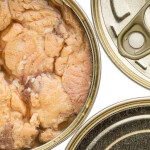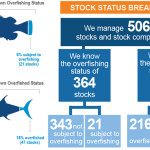UPDATE: This story was originally published in October in SeafoodSource’s Key Buyer 2023 Industry Update – Fall Edition. In November, U.S. President Joe Biden signed a one-year Farm Bill extension that will keep many programs running through September 2024.
U.S. lawmakers are pushing for the U.S. Department of Agriculture (USDA) to play a much larger role in American seafood production, and they’re using the renewal of the Farm Bill to make it happen.
The USDA already plays a significant role in the U.S. seafood economy by buying seafood products, providing financial relief, and investing in new technologies. However, a slew of new bills and amendments to the Farm Bill could radically increase the department’s presence in the sector, especially when it comes to aquaculture.
While NOAA Fisheries may be the first agency that comes to mind when considering the federal government’s role in domestic seafood production, the USDA also wields considerable influence.
The USDA purchases hundreds of millions of dollars of seafood annually. In July, the department awarded USD 118.8 million (EUR 105 million) in contracts to three of the largest U.S. seafood processors, continuing its efforts to secure Atlantic pollock fillets, haddock fillets, rockfish fillets, Pacific shrimp, Pacific whiting fillets, wild salmon fillets, and canned salmon for the National School Lunch Program and other food and nutrition programs.
U.S. state governments and their U.S. representatives frequently call on the department to purchase surplus fish or to prop up struggling fisheries. The Alaska Seafood Marketing Institute (ASMI) sent a request to the USDA in September 2022 for a massive seafood purchase that would help clear out Alaska’s high inventory of sockeye. Alaska’s congressional delegation followed up with a letter to the USDA in March 2023, and two months later, the USDA confirmed that it would be fulfilling that request.
As another means of government assistance, seafood companies can access USDA funding and loan opportunities for business growth. For example, the USDA provided a USD 40 million (EUR 37 million) loan to Northline Seafoods in Alaska, which operates in Bristol Bay, to construct a commercial fishing tender and processing barge. Issued through the Rural Partners Network program in May, that loan was part of the Biden administration’s Food Supply Chain program, which aims to improve America’s critical supply chains.
The department also invests in technology and innovation that can improve domestic aquaculture production, and in September 2023, the USDA delivered USD 13 million (EUR 12 million) for four seafood and aquaculture projects.
Still, USDA support for seafood production is dwarfed by its focus on traditional land-based agriculture. Lawmakers in Congress are considering a handful of legislative solutions that would raise the profile of seafood and aquaculture within the department.
One of the major vectors for change is the Farm Bill – a piece of legislation that needs to be renewed every five years. This omnibus bill covers a vast array of agricultural and food programs, and it’s the key piece of legislation lawmakers can use to influence USDA policies and programs.
U.S. Senator Lisa Murkowski (R-Alaska) has put forth the Improving ARCTIC Act – a collection of amendments to the Farm Bill designed to benefit Alaskan residents and businesses.
“Over the past year, in preparation for the 2023 Farm Bill, my team and I have been working diligently with Alaskan stakeholders to learn more about their concerns, priorities, and goals. Following our hard work and Alaskans’ generous input, I’m proud to unveil the Improving ARCTIC Act, a measure that is truly a win for Alaska in this year’s Farm Bill,” Murkowski said.
The amendments include major seafood provisions, such as expanding the eligibility of commercial fishermen to access USDA grants and assistance; establishing a pilot program for grants that go toward domestic seafood processing in coastal communities; prohibiting any federal agency from regulating offshore finfish farming without congressional authorization, including cooked crab as a covered commodity under the country-of-origin labeling program; creating grants to support reuse, recycle, and sustainability projects related to seafood byproducts; and requiring labels for genetically engineered or lab-grown seafood products.
Alaskan seafood leaders have come out in support of the bill, with ASMI Executive Director Jeremy Woodrow noting the legislation would ensure “Alaska’s fishermen and seafood industry have equitable access to USDA programs and fair competition in the U.S. marketplace.”
“This bill represents the kind of holistic approach we need to promote our responsibly managed domestic seafood industry with a more level playing field in the market, support continued work toward 100 percent utilization in the seafood industry, and explore new opportunities for sustainable economic development in our coastal communities,” Alaska Fisheries Development Foundation Executive Director Julie Decker added.
In August 2023, Senator Dan Sullivan (R-Alaska) took Senate Agriculture Committee Ranking Member Senator John Boozman (R-Arkansas) on a tour of Alaska’s fishing industry as they worked to shore up support for their seafood provisions. On the trip, Boozman acknowledged that support for commercial fishing and seafood production is spread too thin across Congress’s legislative agenda.
“We’re also going to be talking to the fisheries; they have lots of problems, and fisheries are kind of unique – they don’t really have a home,” Boozman told Alaska Public Media. “They’re divided amongst all of these committees, and so we’d like to help out and see what we can do in regard to that industry.”
Lawmakers are also pursuing ways of increasing seafood’s and aquaculture’s presence within the USDA outside of the Farm Bill.
Most notable is the bipartisan Sustaining Healthy Ecosystems, Livelihoods, and Local Seafood (SHELLS) Act, which would establish an office of aquaculture within the USDA.
“Shellfish harvesters and seaweed farmers play an essential role in our food supply, but historically, they haven’t received the support they need to reach their full potential,” U.S. Representative Suzanne Bonamici (D-Oregon) said.
As proposed, the office would be in charge of promoting shellfish, seaweed, and land-based aquaculture operations while providing technical assistance and expertise on best practices. The legislation includes USD 25 million (EUR 23 million) in annual funding for the new office through 2028.
The Supporting Equity for Aquaculture and Seafood (SEAS) Act, introduced by U.S. Representative Frank Pallone (D-New Jersey), would require the department to ensure “fair funding levels” for aquaculture producers in its program. Similarly, the Fishing Industry Credit Enhancement Act would ensure seafood-related businesses – such as cold storage providers and gear suppliers – can use the Farm Credit System (FCS) – a nationwide network of lenders and financial service providers established in 1916 – to provide support for agricultural businesses. While the Farm Credit Act was expanded in 1971 to include commercial fishermen, it did not specifically allow fishing-related companies to apply.
“The Fishing Industry Credit Enhancement Act is a straightforward, common-sense amendment to the Farm Credit Act of 1971 ensuring businesses that support Alaska’s fishing industry – our ranchers of the sea – have the same financing opportunities as businesses supporting our land-based farmers and ranchers,” Murkowski said.
Photo courtesy of Shutterstock / melissamn







